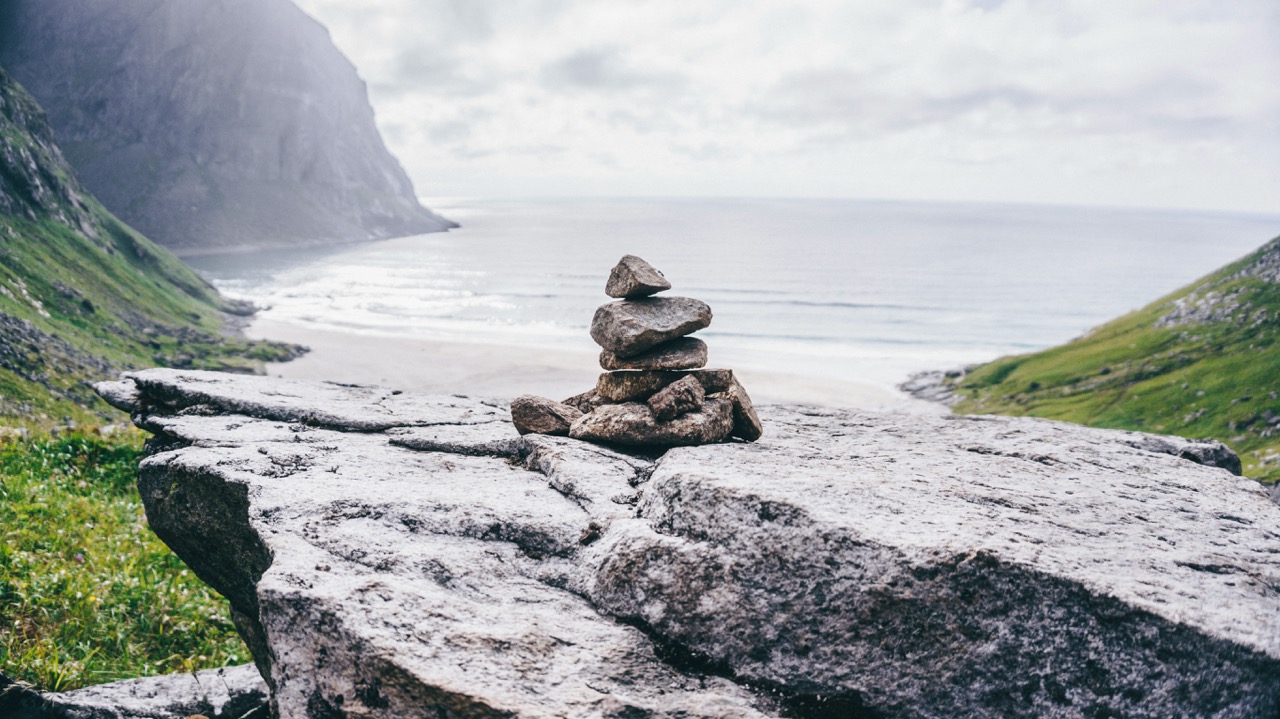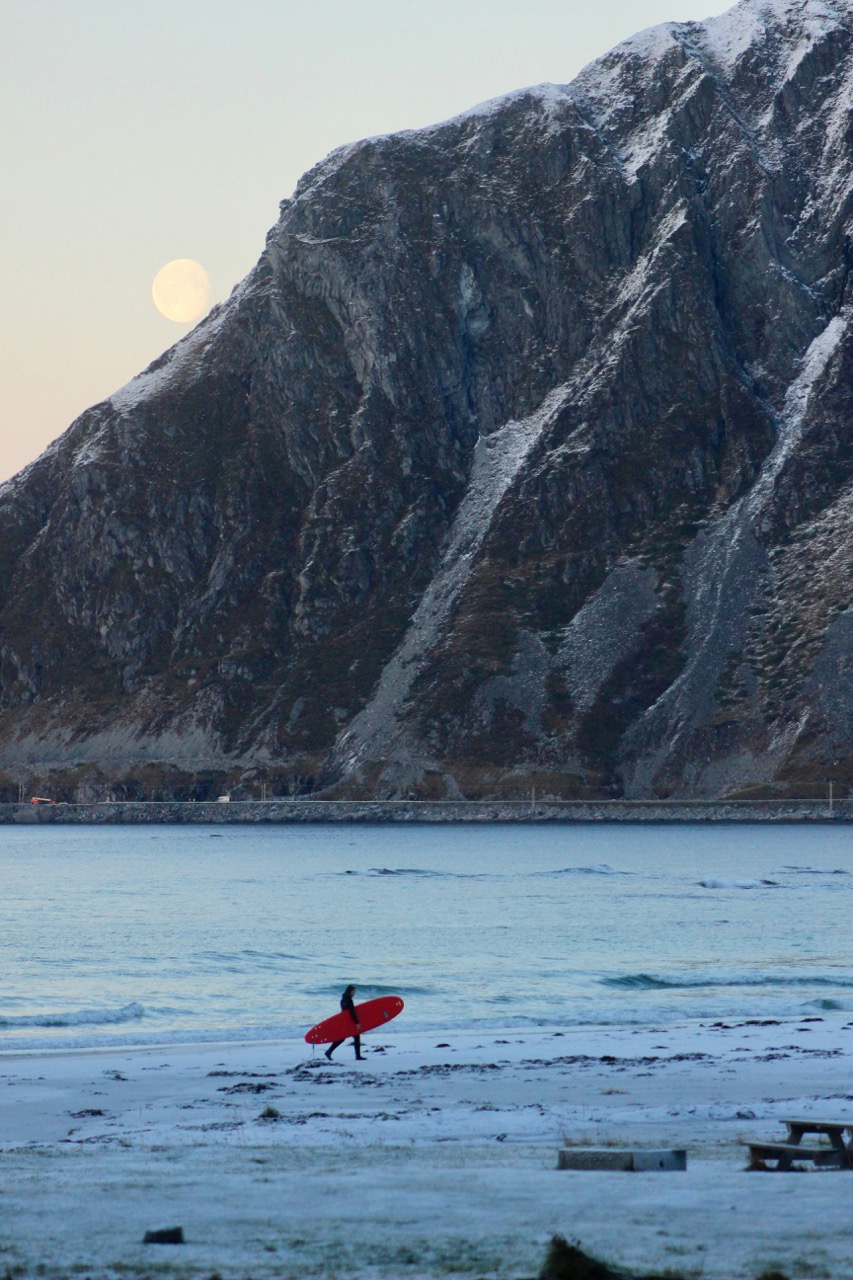A Unique Cold-Water Adventure
When you think of surfing, warm tropical beaches might be the first image that comes to mind. But for adventurous surfers seeking unique thrills, Scandinavia’s rugged coastline offers an experience unlike any other.
The cold waters of Norway and Sweden, paired with stunning landscapes and consistent swells, make this region a hidden gem for surf enthusiasts.

This guide explores the top surf spots in Norway and Sweden, providing insights into what makes them special, along with wetsuit recommendations based on water temperatures.
Surfing in Scandinavia offers a cold-water adventure like no other. Gear up, embrace the elements, and get ready for an unforgettable surf experience in the land of rugged beauty.
Norway: Jæren and Lofoten
Cold-Water Surf at Its Best

Norway stands out as a premier cold-water surfing destination, offering a mix of powerful swells and breathtaking scenery. Its long coastline, exposed to the North Atlantic, makes it ideal for surfing year-round, with two major regions: Jæren and the Lofoten Islands.
Jæren District – The Heart of Norway’s Surf Scene
Located in southwestern Norway, the Jæren coastline is renowned for its consistent waves and dramatic landscapes. It’s the core of Norway’s surf culture, providing a variety of breaks suitable for surfers of all skill levels.
- Bore Beach: One of the most popular spots in Jæren, Bore Beach offers consistent beach breaks with a sandy bottom, making it beginner-friendly yet exciting for all skill levels.
- Hellestø Beach: A quieter surf destination, Hellestø Beach is known for its long rides and cleaner waves, particularly in the autumn and winter when swells are more robust.
- Orre Beach: Located just south of Bore, Orre Beach experiences powerful winter swells that attract experienced surfers. Its multiple peaks provide ample space for everyone, even during busy times.
- Hoddevika: Tucked away in a secluded valley, Hoddevika offers a serene surf experience with consistent waves and stunning surroundings. This is the perfect spot for those who appreciate both surfing and solitude.
Lofoten Islands – The Arctic Surf Playground
Farther north, the Lofoten Islands are known for their towering peaks and picturesque fjords, which provide a dramatic backdrop for surfing. Despite its arctic location, the Gulf Stream tempers the cold waters, making surfing possible year-round with the right equipment.
- Unstad Beach: Often referred to as the “crown jewel” of Arctic surfing, Unstad Beach boasts some of Norway’s most consistent and powerful waves. Breaking over a rocky reef, the waves can vary from mellow to challenging, depending on the conditions, making Unstad a popular winter destination when large swells roll in.
- Flakstad Beach: Another gem in the Lofoten Islands, Flakstad offers long left-handers and a stunning winter landscape, complete with snow-capped mountains. It’s a slightly quieter alternative to Unstad.
- Kvalvika Beach: For those seeking adventure, Kvalvika is a more remote spot that requires a hike to reach. Its isolation, combined with great waves on the right day, makes it a rewarding surf destination.
Wetsuit Recommendation:
The water temperatures in Norway range between 5°C to 15°C (41°F to 59°F). In winter, a 6/5mm wetsuit with boots, gloves, and a hood is essential. During the summer months, a 4/3mm wetsuit should suffice, although boots are still recommended due to the cool water.
Sweden
West Coast Waves and Baltic Surf
Sweden may not have the international reputation of Norway when it comes to surfing, but it offers its own unique surf experiences on both the west and east coasts. The west coast, exposed to the North Sea, benefits from more consistent swells, while the east coast relies on Baltic storms for surfable conditions.
West Coast – Mölle and Beyond
The west coast of Sweden is where you’ll find the most consistent surf, particularly during the autumn and winter months when westerly swells from the North Sea roll in.
- Varberg (Apelviken): Apelviken, located near Varberg, is Sweden’s best-known surf spot. It offers soft beach breaks, making it perfect for beginners, but it also has the potential to challenge more experienced surfers on bigger days.
- Mölle: Mölle, found in the rocky Kullaberg Nature Reserve, provides more powerful reef breaks. This surf spot is for experienced surfers, offering challenging waves and stunning coastal views.
- Åsa Beach: For those seeking a more laid-back experience, Åsa Beach offers smaller, consistent waves that are perfect for beginners and longboarders.
East Coast – Baltic Surf Adventures
While the Baltic Sea is not known for its consistent surf, when storm systems align, the east coast of Sweden can produce waves that rival those on the west coast. Surfing here requires patience and a keen eye on the forecasts, but the rewards are well worth the wait.
- Torö Stenstrand: Located near Stockholm, Torö Stenstrand is the most famous surf spot on Sweden’s east coast. Its rocky bottom and the waves generated by Baltic storms make it a hotspot during the autumn and winter months.
- Gotland Island: Sweden’s largest island, Gotland, offers a mix of beach and reef breaks, with plenty of surf spots for different skill levels. Its peaceful setting makes it a great surf destination for those looking to explore more remote areas.
- Öland Island: Off the southeast coast, Öland Island picks up swells from Baltic storms, offering the occasional perfect wave. While conditions here are less consistent, the island’s natural beauty makes it a worthwhile surf trip.
Wetsuit Recommendation
Water temperatures in Sweden range from 2°C to 18°C (35°F to 64°F). In winter, you’ll need a 6/5mm wetsuit with boots, gloves, and a hood. During summer, a 4/3mm wetsuit is generally sufficient, although the Baltic can still be quite cold.
Tips for Surfing in Scandinavia
- Check Weather and Swell Forecasts: Scandinavian surf is heavily influenced by weather patterns, especially in Sweden, where Baltic storms are key to generating waves. Always check local forecasts before heading out. Check here how to read windguru.
- Gear Up: Due to the cold water, investing in high-quality wetsuits, gloves, boots, and hoods is essential. Even in summer, the water temperatures can be quite cold.
- Respect the Environment: Scandinavia’s surf spots are often in pristine, natural environments. Make sure to respect local wildlife, dispose of trash properly, and leave no trace behind.
- Prepare for the Elements: Scandinavian weather can change rapidly, especially in the far north. Always bring extra layers of clothing and be prepared for cold, wet, and windy conditions.
- Embrace the Adventure: Surfing in Scandinavia isn’t just about the waves. It’s about the journey, the stunning landscapes, and the unique experience of surfing in one of the world’s most beautiful and remote regions.
Iceland
The Ultimate Arctic Surf Destination?
Iceland, though not technically part of Scandinavia, is a neighboring region with incredible cold-water surf. Here are three must-visit spots for any serious surfer:
- Reykjanes Peninsula: The epicenter of Icelandic surfing, with several reef and beach breaks offering powerful waves. You’ll find a mix of right and left-handers, with the best swells occurring during the winter months.
- Thorli Beach: Located on the southern coast, Thorli offers powerful, hollow waves, making it suitable for experienced surfers. The landscape is as beautiful as the surf is challenging.
- Kleifarvatn Lake: This freshwater lake occasionally offers surfable waves when the conditions are right, though it’s more of a novelty spot. It’s surrounded by volcanic landscapes, making it a one-of-a-kind experience.
Wetsuit Recommendation
Iceland’s water temperatures hover between 2°C and 12°C (35°F to 54°F) year-round. A 6/5mm or 7mm wetsuit is crucial, along with boots, gloves, and a hood. The extreme cold requires top-notch gear, even in the summer months.
FAQs about the surf in Scandanavia
Can you surf year-round in Scandinavia?
Yes, surfing is possible year-round in Scandinavia, but cold-water gear is essential, especially in winter.
What wetsuit should I wear in Norway?
In winter, a 6/5mm wetsuit with boots, gloves, and a hood is recommended. During summer, a 4/3mm wetsuit is generally enough.
Are the waves in Sweden consistent?
The west coast offers more consistent waves, especially in autumn and winter, while the east coast relies on Baltic storms for surfable conditions.






